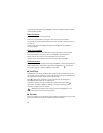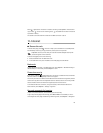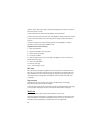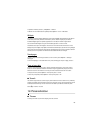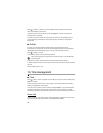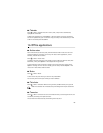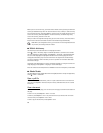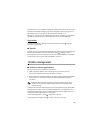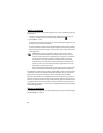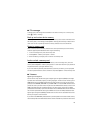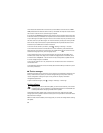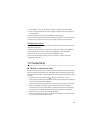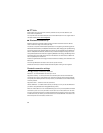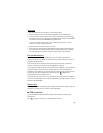
58
When security features that restrict calls are in use (such as call restriction, closed user
group, and fixed dialing), calls may be possible to the official emergency number
programmed into your device.
Factory settings — to reset some of the settings to their original values. You need the lock code.
Positioning (network service) — to change positioning settings. See ”Positioning settings,” p. 34.
Phone
See ”Call settings,” p. 23.
Connection
Select > Settings > Phone sett. > Connection and from the following:
Bluetooth — to switch Bluetooth technology on or off, and edit Bluetooth settings. See
”Bluetooth connection settings,” p. 64.
USB — to edit USB settings. See ”USB connection,” p. 65.
Destinations — to define the connection methods used for reaching a particular destination
Packet data — to select the packet data connection settings. The packet data settings affect
all access points using a packet data connection.
• To set the device to register to the packet data network when you are in a network
that supports packet data, select Packet data connection > When available. If you
select When needed, the device uses a packet data connection only if you start an
application or function that needs it.
• To set the access point name to use your device as a modem with your computer,
select Access point.
Data call — to set the online time for the data call connection. The data call settings affect
all access points that use a GSM data call.
Video sharing — to set your SIP profile settings manually. See ”Video sharing settings,” p. 25.
Presence (network service) — to view and edit the presence settings. Connection applications,
such as push to talk, use the presence settings. You may receive the settings from your
service provider.
SIP settings — to view and edit session initiation protocol (SIP) profiles. See ”Video sharing,”
p. 24.
XDM profile — to create or edit an XDM profile. Settings are for communication applications,
such as presence and push to talk. These enable the service provider to access some user
information that is saved in the network servers but managed by the user, for example push
to talk groups. You may receive the settings from your service provider. See ”Configuration
settings,” p. 12.



